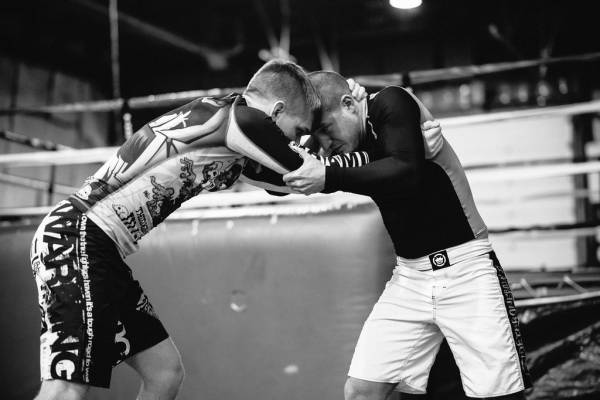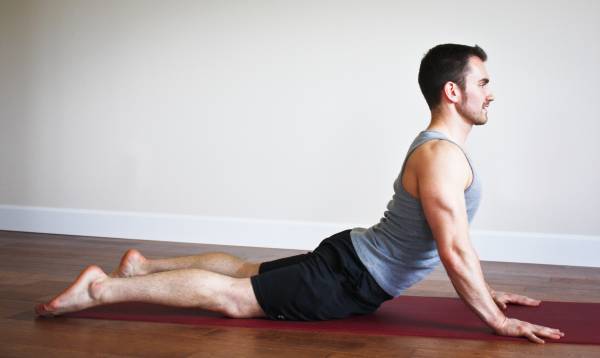There are two givens in Brazilian jiu jitsu. You will become addicted to it and at some point you will experience some type of injury. I wish the second one were not true, but injuries happen in almost every sport. You could be the most flexible or strongest person in your gym and still get hurt.
Injuries typically fall into two categories: contact and non-contact. An example of a contact injury in BJJ would be getting taken down and landing on your shoulder. A non-contact injury would be twisting your ankle during warm up. As athletes, we do everything we can to avoid non-contact injuries and lessen the severity of the contact injuries. When an injury does happen it is devastating, emotionally and physically. A minor injury that keeps us off the mats for a few weeks seems like an eternity. We are often in a rush to return to the mats and jump back into training.
But before you jump into a competition class you need to test the waters and there are a few things you need to think through to increase your chances of a successful return. If you are coming back from an injury, consider taking these three steps:
Step #1: Be Smart
Be smart about your training. It is such a simple phrase to say, but difficult to follow. What is smart training? Smart training is training with the right intensity, training in the right positions, and training with the right partners.
The Right Intensity
If you have been out for a while, then you are better off returning to the gym for a fundamental or beginner class, as opposed to a competition class. Once you feel your injured area responding well to training again slowly start to increase your intensity.
The Right Positions
Often after an injury the type of BJJ game you play changes. For example, student who likes to play upside-down guard has now experienced a low back or neck injury. Playing upside-down guard is no longer a good option. Instead, this student may choose to play a more closed guard game moving forward. Another example is someone who likes to pass guard with a lot of cutting movements. After a knee tweak cutting movements might feel funny, so this student might consider a more over-under or stack pass-type game.

While it is easy to control your game, it is difficult to control your training partners’ games. Do not be afraid to tap fast and often. There is nothing wrong with tapping when you are in a compromised position. If you are coming back from a shoulder injury you may want to tap early from a kimura. If a smart athlete who has a bad back gets stacked while someone is trying to pass guard, he or she will choose to tap or let the opponent pass without fighting it. This is the hardest part for most people.
The Right Partners
When you feel ready to test things out make sure you have a training partner you trust. Returning from an injury is not the time to roll with the new student you have never seen before. Pick a reliable and known partner. The perfect partner is one who lets you move at a good pace with control.
When you first step back on the mats you may feel great and want to pick up where you left off. It is best to start slowly and work your way back up. While you may feel good and have all your range of motion back, your injured area has not been challenged in BJJ-specific positions. A common example of this is returning to BJJ after a shoulder injury. Your shoulder may feel strong, but as soon as you post for a hip-bump sweep your shoulder “feels funny.” Until you test your injured area in BJJ-specific movements you many not know how it is going to feel, so be smart.
Step #2: Self-Assessment
After you start to work your way back to the mats it is important to take some time and think about how you got injured and what you can do differently this time around. Take some time and think about the following:
- Were you overtraining?
- Did you warm up properly?
- Did you get a good night sleep the day before you got hurt?
- Were you stressed all day?
- Did you not tap when you should have?
Be honest with yourself to see if you can figure out if there were any external factors that contributed to your injury.

Step #3: Assess Your Training Program
Every Brazilian jiu jitsu athlete needs to devote some training to corrective exercise and strength training. After an injury, take some time and assess your training program. Some injuries are a result of muscle imbalances or overuse. Does your program correct any imbalances you may have? Does your program incorporate corrective exercise and mobility work?
If you are missing any area from your program make sure you add it in. Most people design programs around their strengths when it is the weaknesses that need to be the focus. If you are strong, but have no mobility, then your next training phase should focus on mobility while maintaining strength.
Conclusion
Your goal is not to train BJJ for a month. Your goal is to train for years. When returning from an injury, be smart. Train at the right intensity, avoid positions that feel uncomfortable, and choose the right training partners. Then take the necessary steps to avoid future injuries by assessing your lifestyle and training program so you can stay on the mats for a long time to come.
Photos 1 & 2 courtesy of David Brown Photography.
Photo 3 courtesy of Brandon Hofer.






